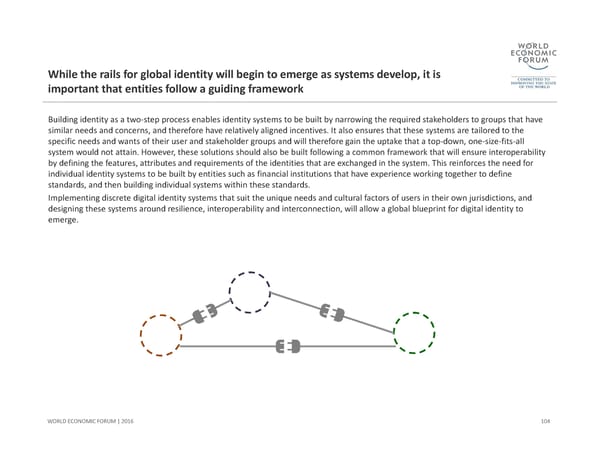While the rails for global identity will begin to emerge as systems develop, it is important that entities follow a guiding frameworkBuilding identity as a two‐step process enables identity systems to be built by narrowing the required stakeholders to groups that have similar needs and concerns, and therefore have relatively aligned incentives. It also ensures that these systems are tailored to the specific needs and wants of their user and stakeholder groups and will therefore gain the uptake that a top‐down, one‐size‐fits‐all system would not attain. However, these solutions should also be built following a common framework that will ensure interoperability by defining the features, attributes and requirements of the identities that are exchanged in the system. This reinforces the need for individual identity systems to be built by entities such as financial institutions that have experience working together to define standards, and then building individual systems within these standards. Implementing discrete digital identity systems that suit the unique needs and cultural factors of users in their own jurisdictions, and designing these systems around resilience, interoperability and interconnection, will allow a global blueprint for digital identity to emerge. 104 WORLD ECONOMIC FORUM | 2016
 A Blueprint for Digital Identity Page 104 Page 106
A Blueprint for Digital Identity Page 104 Page 106